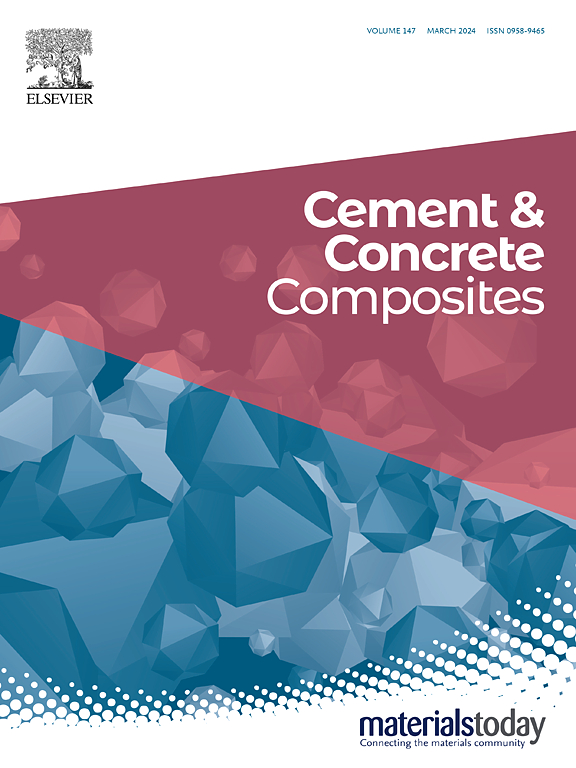用柠檬酸调节活性氧化镁水泥的水化和微观结构发展
IF 10.8
1区 工程技术
Q1 CONSTRUCTION & BUILDING TECHNOLOGY
引用次数: 0
摘要
反应性氧化镁水泥(RMC)是通过氧化镁的水化和碳化形成的一种新型粘结剂,但其低反应性阻碍了它的广泛应用。初步研究表明,柠檬酸可与 Mg2+ 形成化合物,从而调节这些过程,但其机理尚待深入了解。本研究调查了柠檬酸对 RMC 的新鲜和硬化性能的影响。结果表明,RMC 浆料的剪切屈服应力和塑性粘度随着柠檬酸的添加而降低。在标准固化条件下,4 重量%和 8 重量%的柠檬酸可使 RMC 在 14 天时的抗压强度提高 100%。柠檬酸在氧化镁上的吸附抑制了青金石的形成,14 天后形成了无定形的网状结晶微结构。在二氧化碳固化条件下,柠檬酸含量为 8wt.% 的 RMC 在 14 天后的抗压强度提高了 12%,这可能是由于形成的多孔微观结构促进了二氧化碳的吸收和微观结构的致密化。本文章由计算机程序翻译,如有差异,请以英文原文为准。
Regulating hydration and microstructure development of reactive MgO cement by citric acids
Reactive MgO cement (RMC) is a novel binder formed through the hydration and carbonation of MgO, but its low reactivity hinders its wider application. Preliminary research has suggested that citric acids can form compounds with Mg2+ that regulate these processes, but the mechanism is yet to be understood well. This study investigated the effects of citric acids on the fresh and hardened properties of RMC. Results showed that the shear yield stress and plastic viscosity of the RMC pastes decreased with the addition of citric acids. Under standard curing, 4 wt% and 8 wt% citric acids increased the compressive strength of RMC by ∼100 % at 14 days. The adsorption of citrate on MgO inhibited the formation of brucite, forming an amorphous network-like microstructure crystallised after 14 days. Under CO2 curing, the compressive strength of RMC with 8 wt% citric acids increased by 12 % at 14 days, which could be ascribed to the porous microstructure formed that promotes the uptake of CO2 and the densification of the microstructure.
求助全文
通过发布文献求助,成功后即可免费获取论文全文。
去求助
来源期刊

Cement & concrete composites
工程技术-材料科学:复合
CiteScore
18.70
自引率
11.40%
发文量
459
审稿时长
65 days
期刊介绍:
Cement & concrete composites focuses on advancements in cement-concrete composite technology and the production, use, and performance of cement-based construction materials. It covers a wide range of materials, including fiber-reinforced composites, polymer composites, ferrocement, and those incorporating special aggregates or waste materials. Major themes include microstructure, material properties, testing, durability, mechanics, modeling, design, fabrication, and practical applications. The journal welcomes papers on structural behavior, field studies, repair and maintenance, serviceability, and sustainability. It aims to enhance understanding, provide a platform for unconventional materials, promote low-cost energy-saving materials, and bridge the gap between materials science, engineering, and construction. Special issues on emerging topics are also published to encourage collaboration between materials scientists, engineers, designers, and fabricators.
 求助内容:
求助内容: 应助结果提醒方式:
应助结果提醒方式:


